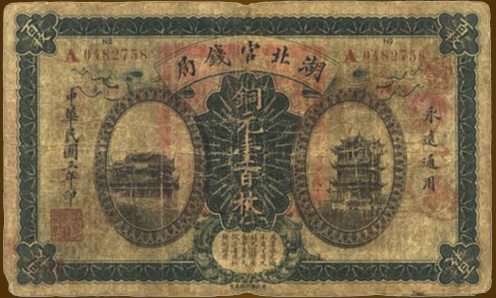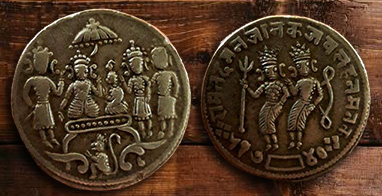Zamzian Rupee
The Deal's Seal
History
The currency of Zamzara is the Rupee, created in 415 AC under the vision of Emperor Johwa Aldìfāng during the harmonious Jasmine Age. Prior to this, the Zamzian Empire levied taxes that were often collected in the form of crops - many a tax collector needed squads just to lug carts of cabbage back to an Imperial outpost. Value was signified in weight: the more a citizen owed the Empire, the more was taken from them. Artisans could and did pay in the common tools of their trade - if a mason did not have enough clay to satisfy the tax collector, their tools were forfeit until their debts were settled. To complicate matters, tax collectors were tasked with bringing in certain levels of lucre, but with almost no oversight, and took a cut of their collections as income. Peasant riots were unsurprisingly common under this system, and Johwa's predecessor, Emperor Qián, had simultaneously lowered the tax levels on his subjects and constructed beautiful temples across the Empire, straining the government's resources. These served to quell dissent, but put the long-term health of the Empire at risk - and Johwa knew this. Working closely with the Heavenly Bureaucracy's finest scholars, they devised a refined form of trade centered around the production and distribution of metal coins: the first Rupee.
While at the time resources were used to trade valuable items, there was also a "social resource" that was ubiquitous among even the proto-Zamzians: The Samjika. This was an accessory that consisted of interlocking necklaces that had beads, rings, and medallions, and was used to quickly relay one's social and financial status to others. A more detailed inspection of the Samjika would reveal an individual's entire financial history, the deeds they had done for their community, and how pious they were, among other things. Each person had at least three necklaces: One for their financial history, one for their masteries and learning, and one for their communal history. This final necklace served as the inspiration for the Rupee: the third Samjika was traditionally composed of metal hoops or rare shells, and people gave these small items away to others to honor them and demonstrate how trustworthy the person was. If they had many items from a variety of people, then that person was known to be a pillar of the community. The Heavenly Bureaucracy noticed how easily and often people traded away these small metals in exchange for favors, and modeled their new currency after its lessons. While the Samjika disappeared from common use around 600 AC, it has recently returned among affluent cities such as Sagara Nagara, where people have looked backwards to connect with their ancestors and the long-lost Empire. Its meaning is often lost on their rural counterparts.
Originally, Rupees were cast in bronze, but they were prone to being bent, broken, or counterfeited, and around 650 AC, the Empire moved to using nickle and gold for different demarcations of value, strengthening its power as the new materials were much harder for the common man to make or acquire. By 900 AC, there was enough coinage being circulated throughout the continent that even the poorest Zamzian could be expected to have at least a couple of coins to rub together - and the wealthy had entire rooms within their homes dedicated to storing piles of money. It was difficult to transport large amounts of coins over long distances, and collecting taxes grew more difficult as time went on. Minting more coins was expensive and resource-dependent - and continual influx of money into the Zamzian economy caused its value to plummet. This was not the first time this happened, but coinage had become so devalued that a citizen would have to bring an entire sack of gold merely to pay for the day's food. Rare metals were no longer viable as a currency - not in their current form.
The fledgling paper industry had the solution: trade paper notes for Rupees. They offered their services to the Jogi Dynasty, claiming it would be an honor to "aid the Empire in its time of need". Coincidentally, it was also prestigious and profitable. Within a few decades, the Rupee was primarily a banknote, with coins being used for smaller day-to-day transactions. While other currencies were used on the local level for several decades, the Rupee lasted until The Kalyugi caused human civilization to collapse. However, the woodblocking techniques were known across all Zamzara due to the strong scholastic culture and reverence for the past permeating every level of society. Many blocks that the Empire used to print money were lost during The Kalyugi, but have been retrieved in the past 300 years by intrepid adventurers working on a scholar's dime. New forms of the Rupee were derived from the old techniques and spread throughout Zamzara by travelling merchants and wanderers, though primarily in paper form, as the infrastructure needed to create coinage had barely gotten back on its feet. To those who bother thinking about it, the Rupee is a symbol of a bygone era, yet simultaneously one of resilience and solidarity - one of the great hallmarks of civilization that separates Humanity from Monsters.
Manufacturing process
The Rupee comes in two forms: coins and paper. Coins are created by casting liquid metals into a bronze mold - in the old days, a smith would have to hammer each coin into being flat, which was an especially laborious process. In many larger rural areas, this is still how coins are created to this day. In the century before The Kalyugi, artisans had innovated on a new way to create coinage: a complex machine that rolled rods of metal into flat coins with Imperial designs on them, connected by a thin piece of metal. Apprentices would then cut coins from the "metal tree" and reuse the metal for more coins. This technique is still used in larger cities such as Vira and Minato Nagara. However, even now advances continue to be made in minting - just within the past 2 decades Sagara Nagara has created a steam-powered industrial mint that requires less and less people to operate as machines grow more complex.
For over 1000 years, the Rupee's paper form was created by simply pressing a slip of paper onto an inked wooden block, which was then rubbed with a hard object to impress the design onto the note. Different values of Rupee are printed onto different colored pages using a variety of ink colors in order to reduce counterfeiting. Woodblocks were universally created by the Zamzian Empire and distributed to licensed artisans across the continent - their intricate designs and precision made them incredibly difficult to duplicate. Even now, some towns print new money using blocks that outdate the town itself. However, the machines of Sagara Nagara have made this process easier and more expansive than ever before - which they immediately leveraged into powerful trade advantages over other seafaring settlements.
Item type
Currency & Deeds
Owning Organization
Remove these ads. Join the Worldbuilders Guild






Comments